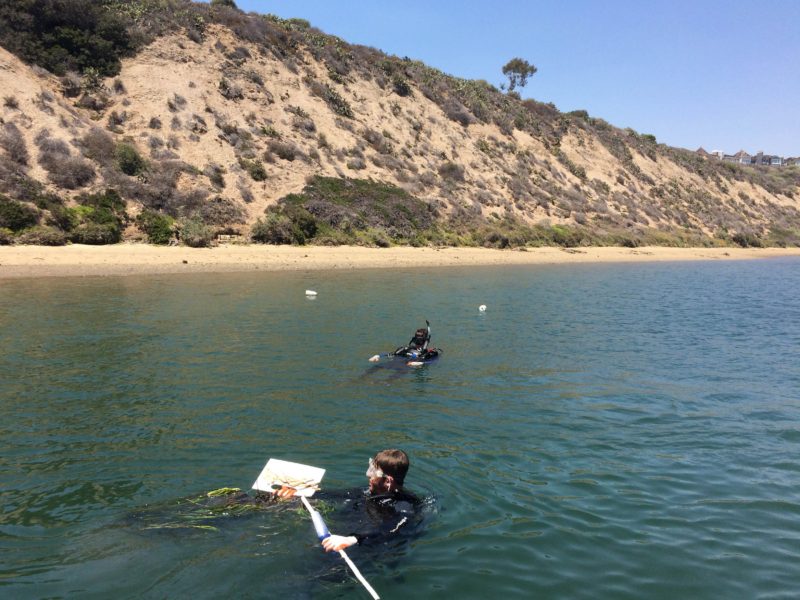
Restoring the vast meadows of the sea in shallow bays and inlets across the coast may be our best hope to halt ocean acidification and save our shellfish. Rising temperatures and carbon dioxide levels in the atmosphere are making our ocean more acidic. As pH drops, shells of marine life like oysters, clams and crabs start to dissolve away, as do the robust fisheries that depend on them.
Eelgrass provides many valuable ecosystem functions by improving water quality, reducing shoreline erosion, and reviving fish populations. In addition to renewing coastlines, eelgrass can strengthen the chemistry of our oceans by sequestering carbon and provide a refuge for vulnerable marine life.
Orange County Coastkeeper, in partnership with Coastal Resources Management, Inc. and the Department of Fish and Wildlife, has been restoring eelgrass along the DeAnza Marsh Peninsula in Upper Newport Bay each summer starting in 2012. Since then, they have worked with 264 land-based volunteers, scientific divers, and interns to invest 2,365 hours dedicated to eelgrass restoration. They’re now expanding their program to collect scientific data to assess just how much their restoration work can mitigate acidic conditions.
Learn more about eelgrass restoration from Orange County Coastkeeper.
Read the West Coast Ocean Acidification & Hypoxia Science Panel Report to find out how climate change is altering the very chemistry of our oceans.
Find out how Hog Island Oyster Company is researching ocean acidification.

Communications Consultant Lola Dvorak supports CCKA’s strategic communications by helping waterkeepers tell their stories.



